Taking an encyclopedic approach to learning latin nomenclature and botanic names can be effective but a little overwhelming at times. A good way to break up this approach is by taking a look at each letter, specifically flowers that start with F.
You may find you learn something about a plant you’ve never heard of, while also gaining a better knowledge of the plants you already recognize, as well as a better memory for their botanical name.
This is an approach to learning names that is accessible to both botanical newcomers as well as those who are well-studied.
Within the letter F there is much variety, as you can imagine, but we want to include some of the usual suspects as well as some flowers and plants you maybe won’t recognise. With this approach we can learn, intermediates and beginners, and explore the wonderful world of plants together!
1. Forsythia
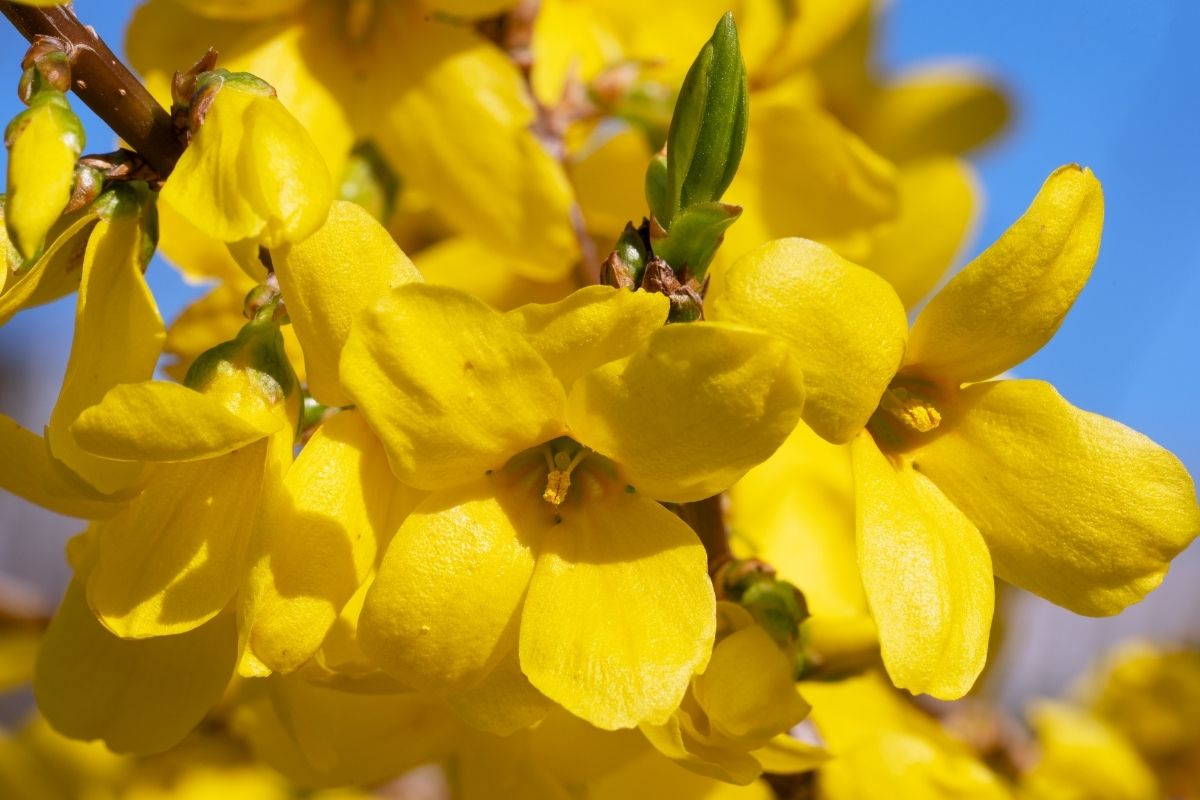
This is a genus of flowering plants from the Oleaceae family, commonly known as the oliver family. Most of the plants are endemic to Asia but are cultivated across the world for their inflorescence.
The plant is named after William Forsyth, one of the original heads of the Royal Horticultural Society. Like the olive plant, the Forsythia usually forms as a shrub but does flower as well as having interesting foliage.
One reason that Forsythias are cultivated is they are early bloomers in the early spring, making them a lovely way to bring in the Spring months, and making them popular during the Easter period. The flowers actually are produced before the foliage even comes.
The flowers usually have four petals which join at the base; they also act as a biological protection for the plants’ reproductive plants, protecting them from the spring rain.
When the foliage does come out it can often change colors as the season goes on, adding to their horticultural interest. The general season for the Forsythia can be quite long when treated well as they can become quite hardy.
Related: 16 Gorgeous Flowers That Start With G (Including Pictures)
2. Felicia

Commonly referred to as the blue daisy, the Felicia is an often overlooked plant within the Asteraceae family.
It dates back to 1692 in terms of botanical history where it was first recorded by Leonard Plunket of English Botany, but it was obviously unclassified and around a long period of time before this.
The plant’s main distribution is across the Cape Floristic Region within South Africa but does stretch elsewhere in the continent of Africa, even as high as Sudan.
Commonly among other daisies or Asteraceae, the flower has a common daisy-like flower head that is surrounded by the usual thin and spindly petals. What is common among Felicia cultivars, but not widely in the Asterceae family, is that they have blue petals not white.
Felicia amoena subsp. latifolia is a particularly subspecies of the plant that is worth the interest of the flower appreciative botanist.
Although, the genus is subdivided into six different groups for taxonomical reasons, which means there is a good amount of variety to explore.
3. Francoa
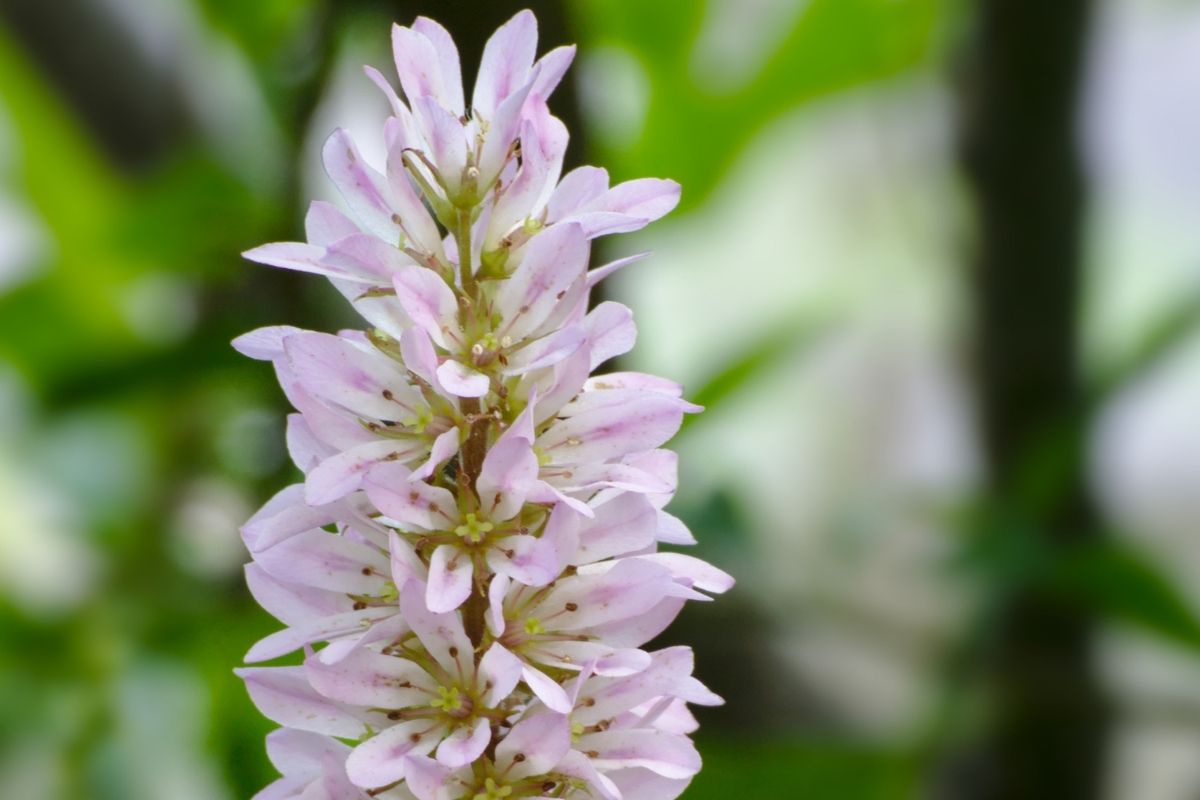
This is a genus of flowering plants that is quite similar to Lavender and other herbaceous, flowering perennials. The plant is endemic to Chile which makes it of particular horticultural interest. The plant is fairly similar to a Heuchera but the racemes and flowers grow much higher,
Like a Heuchera, the Francoa will grow clumps of round basal leaves that are quite compact. Although unlike the Heuchera, the Francoa often keeps its lush green leaves.
The flowers can grow potentially up to a meter high and the racemes of compact flowers, like a lavender, are made up from small cup shaped flowers that can be pink with red stems.
They often flower in the late summer and early fall which can make them worth cultivating for this period of late summer bloom.
4. Fritillaria
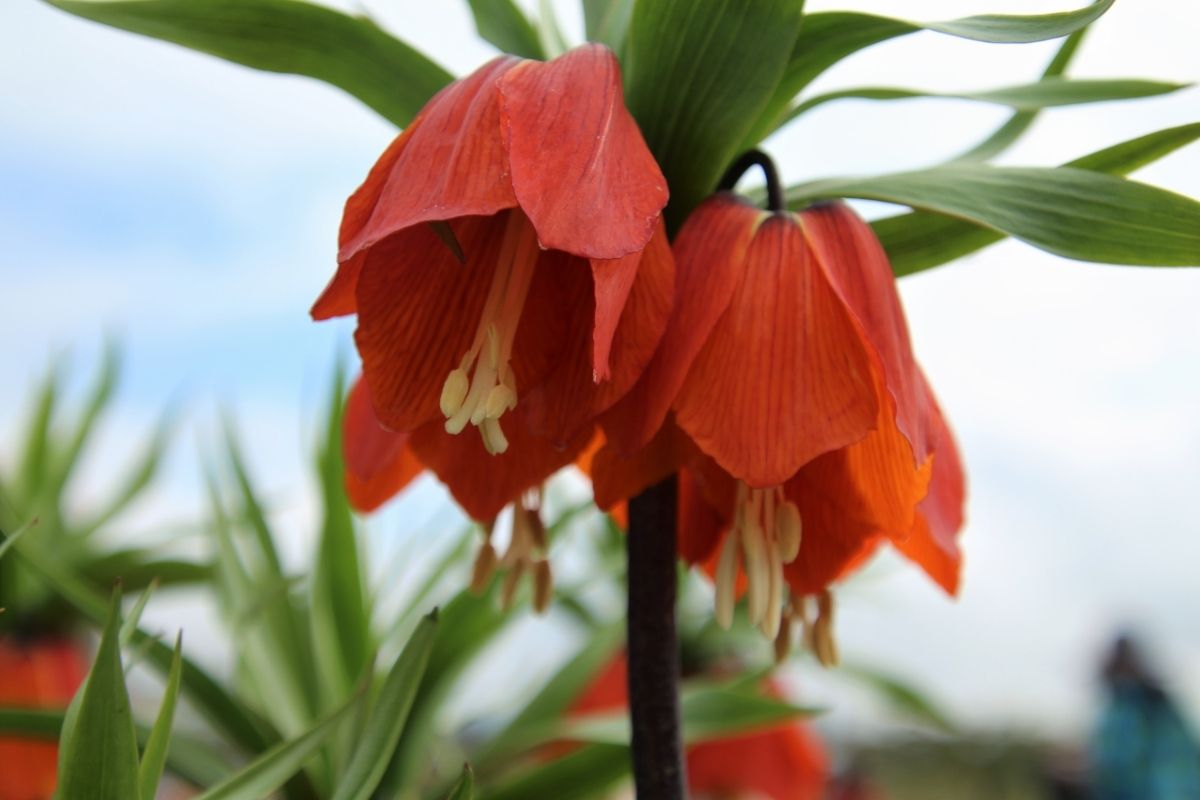
Fritillaria is an often overlooked, or at least forgotten about, bulbous perennial plant within the lily family Liliaceae. Fritillaria was first botanically recognised in 1571, but has recently become fairly endangered as a species and genus.
The flower is native to the Northern hemisphere, having fairly equal distribution across North Africa, Eurasia, and other temperate climates.
The flowers are extremely unique and interesting as a result of their unique checkered inflorescence. The flower head is usually alone, like a Lily, but is considered a ‘nodding’ flower head meaning that it droops forward and face downward.
Moreover, the petals of the plant are often checkered, a very unique variegation that makes them particularly sought out for their ornamental quality.
They are also extremely popular in Chinese medicine as a cough medicine, to fit the medicine fritillaria is picked in the wild, rather than cultivated as it is thought that cultivated species won’t contain the potential medicine.
As the plant was so widely cultivated for both its ornamental and potential medicinal application the plant’s distribution was not looked after well and many species of Fritillaria face endangerment and potentially extinction.
This is a contribution of factors such as over-harvesting, over-grazing as well as its habitats being affected by global warming.
This has occurred to the point where Fritillaria delavayi seems to have grown brown and grey flowers when previously bright. Some scientists speculate the flower is trying to blend into the rocks of its habitat to potentially camouflage itself from humans.
5. Fuchsia
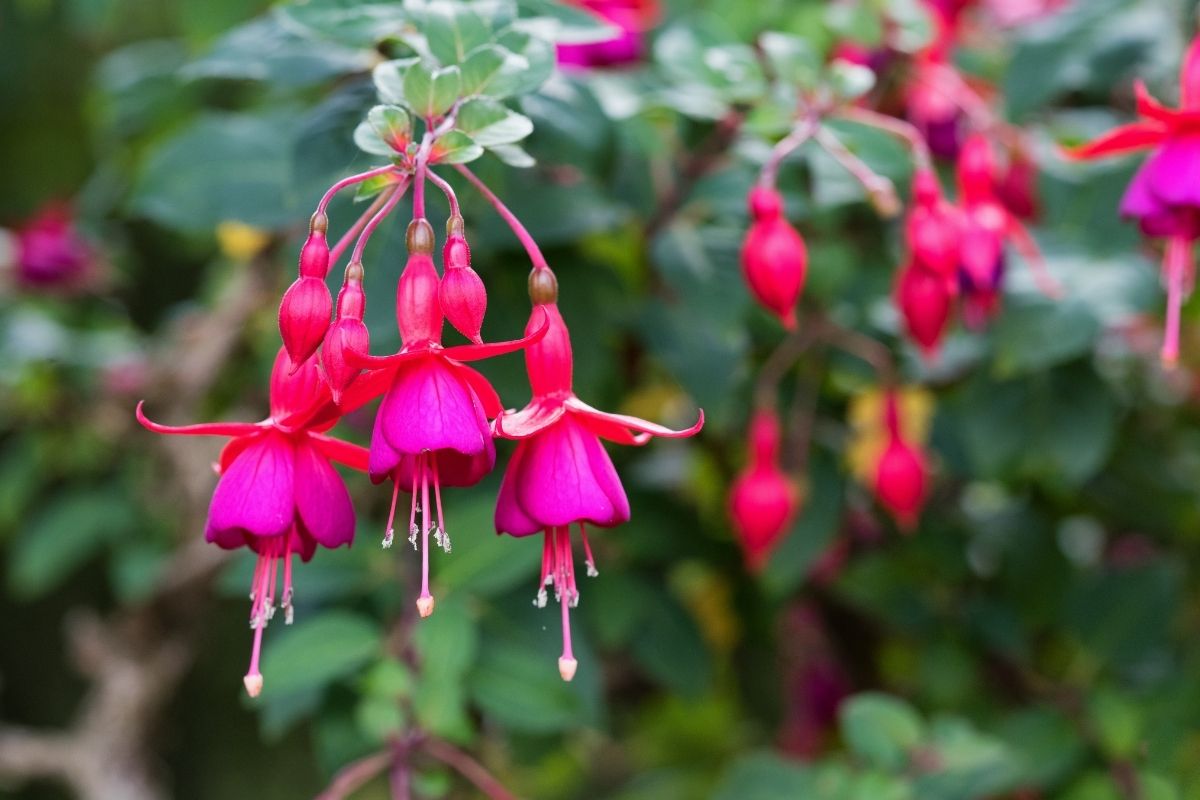
The Fuchsia is potentially the most recognisable of all the plants that begin with F. They are a genus of flowering plants that are either shrubs or trees but are often cultivated for their ornamental properties. Of particular interest is the age of the Fuchsia within botanical history.
The plant is fairly native to the South Americas but does alsp grow as far as Central America and Mexico – particularly Tierra del Fuego.
The plant wasn’t actually recognised until the Andes were explored, around the 1600s. However, many botanists believe that the Fuchsia plant we recognize today is actually diverged from the once large Circea genus, Circea have similar flowers but have different plant parts as recognised by modern botany.
They believe this divergence happened in the Eocene period which, ironically, makes the Fuchsia relatively ‘recent’ in terms of a ‘new’ plant, although this happened 41 million years ago.
In any case, the Fuchsia has tear drop flower morphology. They have a long stamen that extrudes from the head of the flower.
The flower head emerges from four flat and wide sepals that surround the flower. Different cultivars such as ‘Dollar Princess’ have double flowers, and others can have double colors.
Related: 15 Awesome Flowers That Start With K (Including Pictures)
6. Fragaria
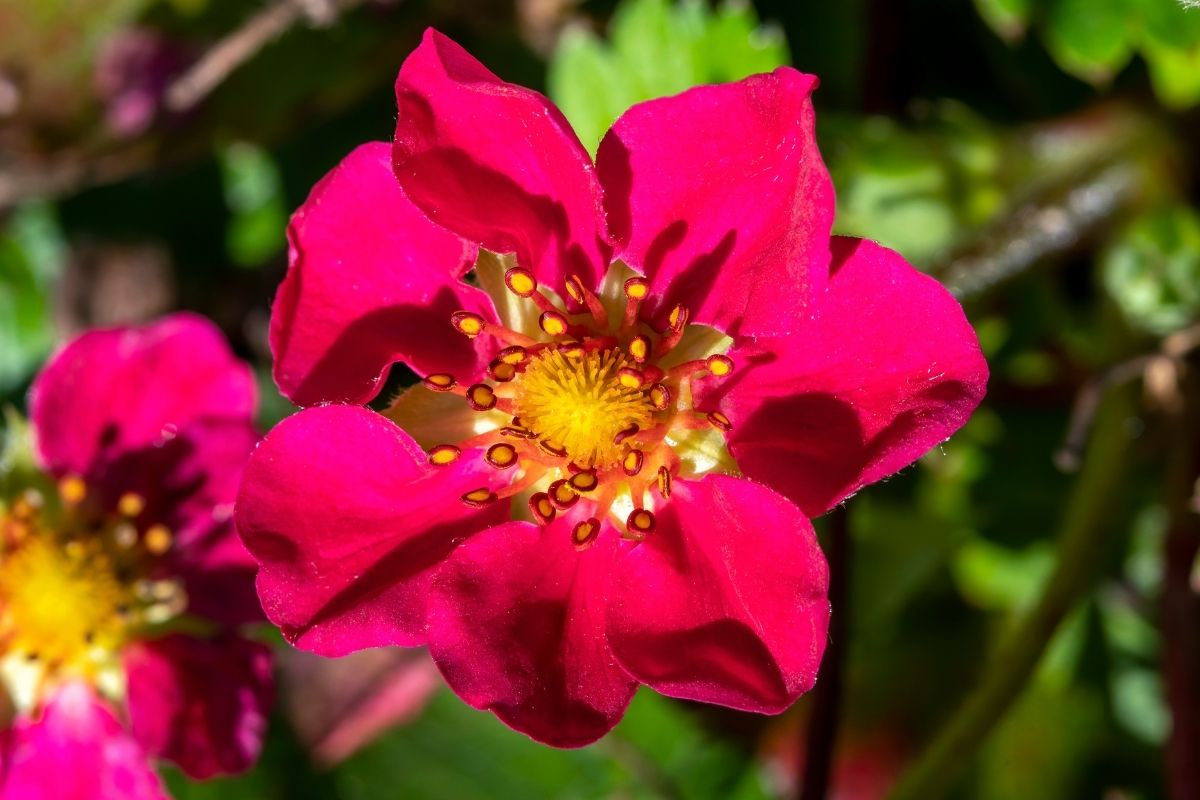
One plant that begins with F which you may not recognise from its latin name is the Fragaria. The flowers of the Fragaria plant are what gives birth to the notorious strawberry. There are around 20 species of fragaria and even more hybrids and cultivars.
The most commonly grown species is Fragaria x ananassa, the hybrid that creates the strawberry we recognize commercially and agriculturally. Although other fragaria plants do produce fruits, only they may taste different. The ‘garden strawberry’ was probably first cultivated in France during the 1750s.
What may surprise you is that the Fragaria is part of the Rose family, Rosaceae. This means that the common garden strawberry is actually closely related to the rRose, which could shock some people. Unlike roses, the Fragaria does not cultivate thorns.
Many Fragaria species do produce fruit but they aren’t always nice tasting enough to warrant specific cultivation, beyond the ‘garden strawberry’ at least. Strawberries are grown across the world so now has a pretty wide spread distribution across temperate climates.
All species of Fragaria produce ‘strawberries’ and all also produce flowers. While some are grown for heirloom cultivation, like the previously mentioned Fragaraia x ananassa, but some are grown purely for their flower and ornamental quality.
Most of the flowers usually have five petals, out of the flower head often grows the fruit. Many species and subspecies, such as Fragaria nilgerrensis, are grown for their foliage which can be impressive. The Fragaria nilgerrensis is a great example of this sort of impressive foliage.
The Final Word
There you have it, many pants that start with the letter F. You may have heard of the Fuchsia, but it is great to explore some more interesting plants such as the Fritillaria and raise awareness of its conservation.
The Fragaria is a particularly interesting one that may catch out the novice botanist, its surprising how many people didn’t realise the strawberry isn’t its own plant.
Rather, the strawberry is a great example of modern horticultural methods, such as hybrids, that are commonly used in the modern agricultural businesses including that of marijuana cultivation.
Maybe you found next season’s project, learned something new about a plant you already knew about, or found a new flower to explore botanically.
Encyclopedic or alphabetical approaches to learning plant names are really effective, if arduous, and can also teach you loads of things about plants you already know as well as new plants, alongside learning their names.
We hope you learned something from this article, here are other articles that you can learn from:
6 Lovely Light Orange Flowers (Including Pictures)
22 Stunning Golden Yellow Flowers (With Pictures)







